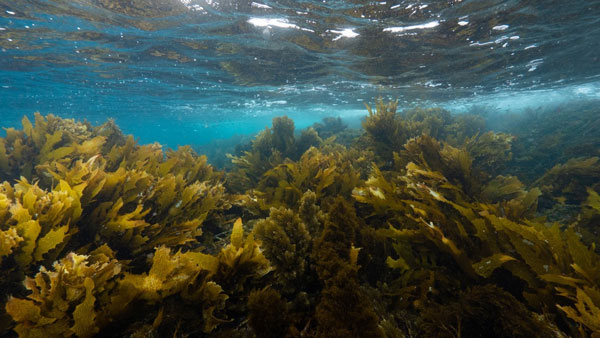Kelp forests provide an estimated value of $500 billion to the world and capture 4.5 million tonnes of carbon dioxide from seawater each year.
A new paper published in Nature Communications aims to fill knowledge gaps by identifying the economic value of marine kelp forests. It suggests that kelp forests across the world provide three main ecosystem services worth billions of dollars annually: the boosting of fisheries production; the removal of excessive nutrients like nitrogen and phosphorus from the water; and the sequestration of carbon dioxide.
Golden kelp, South Australia. Photo by Stefan Andrews
Aaron Eger at the University of New South Wales in Australia set out with his fellow researchers to quantify the benefits of seaweed. The team focused on six kinds of kelp which grow in dense thickets known as forests.
Testing seaweed gave researchers insight into how much the plants absorb. “Much like a plant on land, [kelp forests] are taking up nutrients, they’re taking up carbon dioxide, and using light to fuel their growth,” Eger said. In total, these kelp forests provide two main benefits. They support $465 to $562 billion per year of the global economy. They also sink almost five million tons of carbon dioxide.
The Kelp Forest Alliance recommends protecting 3 million hectares (7.4 million acres) and restoring 1 million hectares (2.5 million acres) of kelp forests by 2040 to support the biodiversity goals of the Kunming-Montreal Global Biodiversity Framework.
The full peer-reviewed paper in Nature can be read here, with media reports in National Observer, Mongabay, My Modern Met, and The Conversation.
